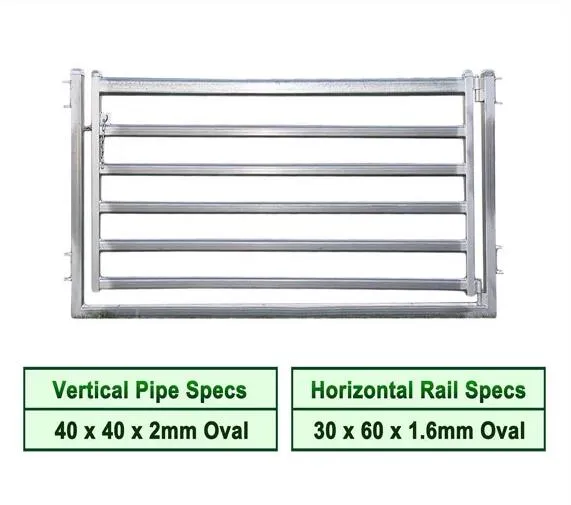
- Afrikaans
- Albanian
- Arabic
- Armenian
- Azerbaijani
- Basque
- Belarusian
- Bengali
- Bosnian
- Bulgarian
- Croatian
- Czech
- Danish
- Dutch
- English
- Esperanto
- Estonian
- Finnish
- French
- Galician
- Georgian
- German
- Greek
- hawaiian
- Hindi
- Hungarian
- Indonesian
- irish
- Italian
- Lao
- Latvian
- Lithuanian
- Luxembourgish
- Macedonian
- Maltese
- Myanmar
- Norwegian
- Polish
- Portuguese
- Romanian
- Russian
- Serbian
- Slovak
- Somali
- Spanish
- Swedish
- Thai
- Turkish
- Turkmen
- Vietnamese
gru . 26, 2024 06:49 Back to list
Guide to Installing Cattle Panel Fencing for Efficient Livestock Management
Installing Cattle Panel Fencing A Comprehensive Guide
Installing cattle panel fencing is an essential undertaking for anyone looking to safely contain livestock on their property. Cattle panels, typically made from heavy-duty steel, provide a sturdy, long-lasting barrier against potential predators and offer significant visibility for both the animals and the farmer. This article will guide you through the process of installing cattle panel fencing effectively while ensuring that you have all the necessary tools and materials at hand.
Understanding Cattle Panels
Cattle panels are large, rectangular grids, usually measuring about 16 feet long and 4 to 5 feet high. Their design allows for a strong structure that can withstand the pressure of large animals, making them an excellent choice for cattle, goats, or even sheep. The spacing between the vertical bars ensures that animals cannot escape while still providing airflow and visibility.
Planning Your Fencing Layout
Before diving into the installation process, it’s crucial to plan the layout of your fence. Consider factors like
1. Animal Safety Make sure your fencing encloses a perimeter that protects your livestock from potential predators. 2. Terrain Identify any uneven terrain or natural obstacles like trees or large rocks that may interfere with your fence line. 3. Accessibility Ensure that you have easy access to feed and water sources for the animals, and consider including a gate for entry and exit.
Once you have determined the layout, mark the corners and the line of the fence using stakes and string.
Gathering Materials and Tools
For a successful installation, you will need the following materials
- Cattle panels - Steel posts (T-posts or wood posts, depending on your preference) - Wire ties or clamps (to secure the panels to the posts) - A gate (if necessary) - Concrete mix (optional, for securing posts) - Tools A post driver, hammer, wire cutters, level, and measuring tape.
Installing the Fence Posts
1. Post Placement Begin by placing your fence posts along the marked perimeter. A common distance between posts is about 8 to 10 feet, but this can vary based on local regulations and the specific needs of your livestock.
installing cattle panel fencing

2. Digging Post Holes Use a post hole digger or auger to create holes for each post. Make sure the holes are deep enough—ideally about one-third the length of the post—to provide adequate stability.
3. Setting the Posts Insert the posts into the holes, ensuring they are straight and level. If you are using concrete, mix and pour it into the holes to secure the posts in place. Allow the concrete to cure as per the manufacturer's instructions.
Attaching Cattle Panels
Once your posts are securely in place, you can begin attaching the cattle panels
1. Positioning the Panels Lift the panels and position them between the posts. Make sure they are oriented correctly, with the bottom of the panel flush against the ground.
2. Securing Panels Use wire ties or clamps to attach the panels to each post. Depending on your choice of materials, you may choose to use fencing staples for wooden posts or specially designed panel ties for metal posts. Ensure that the panels are tightly secured and there are no gaps through which animals could escape.
Installing a Gate
If you included a gate in your design, install it last. Make sure it swings freely, and secure it with a latch that is easy for you to operate but difficult for livestock to manipulate.
Final Touches
Once the cattle panel fencing is installed, walk along the fence line and check for any loose ends or gaps. Trim any excess wire and clean up the installation site.
Conclusion
Through careful planning and methodical installation, cattle panel fencing can greatly enhance your ability to manage and protect your livestock. By following this guide, you will ensure that your animals remain safe and secure, while also creating a visually appealing boundary for your property. Happy fencing!
-
Your Ultimate Solution for Australian Temporary Fencing
NewsMay.14,2025
-
The Ultimate Guide to Crowd Control Barriers: Secure Your Events with Ease
NewsMay.14,2025
-
Secure Your Livestock with High-Quality Livestock Fence Panels
NewsMay.14,2025
-
Enhance Your Livestock Management with Top-Quality Cattle Fences
NewsMay.14,2025
-
Enhance Security and Safety with Temporary Fencing Solutions
NewsMay.14,2025
-
Corral Gates
NewsMay.14,2025









